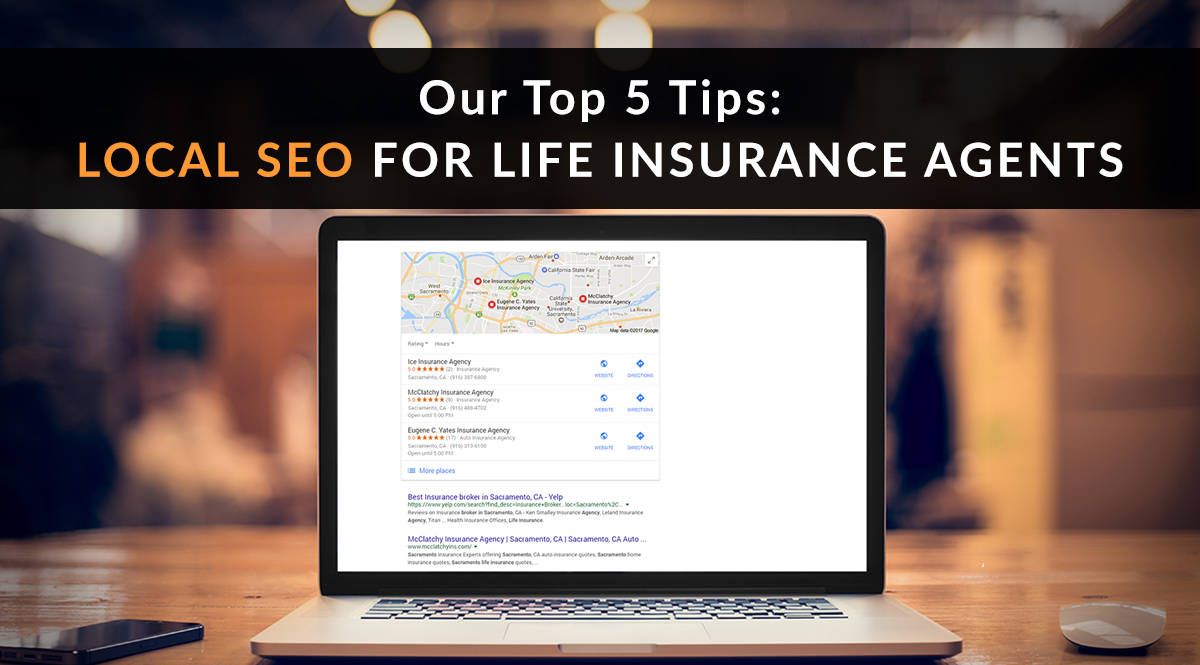Car Accident Not My Fault: What to Do
If you’ve just been in a car accident that wasn’t your fault, it’s normal to feel shaken and confused. The aftermath of a collision can be overwhelming, especially if you’re dealing with injuries or property damage. However, it’s crucial to remain calm and take the necessary steps to protect your rights. Here’s an essential guide on what to do after a car accident that’s not your fault.
Stay Calm and Ensure Safety
In the immediate aftermath of an accident, it’s imperative to stay collected and focused on safety. Check yourself for injuries and attend to any immediate needs. If you’re able, move your vehicle to a safe location off the road. Turn on your hazard lights and call 911 to report the accident and request medical assistance if necessary. While waiting for help to arrive, stay out of harm’s way and avoid confrontations with the other driver.
Exchange Information
Once you’ve ensured safety, exchange information with the other driver involved in the accident. This includes your name, contact information, insurance details, and license numbers. It’s also helpful to take down the make, model, and license plate numbers of both vehicles. If there are any witnesses, get their names and contact details as well. They may provide valuable testimony later on.
Document the Scene
Thorough documentation is crucial for supporting your claim of non-fault. Take pictures of the damage to your vehicle, the other vehicle, and the surrounding area. If there are any visible injuries, photograph those as well. Make sure to capture both the overall view of the scene and close-up shots of specific damage. If possible, draw a diagram of the accident to illustrate how it occurred. Detailed documentation will help you present a clear and compelling case.
Seek Medical Attention
Even if you don’t feel any immediate pain or discomfort, it’s essential to get checked out by a medical professional. Some injuries, such as whiplash or concussions, may not manifest symptoms for several days or even weeks after the accident. Seeking medical attention promptly will ensure that you receive the necessary treatment and establish a record of your injuries for insurance purposes.
Report the Accident to Your Insurance Company
As soon as possible, contact your insurance company to report the accident. Provide them with all the details you have gathered, including the other driver’s information, the police report number (if there is one), and any witnesses you spoke to. Your insurance company will assign you a claims adjuster who will guide you through the process and help protect your interests.
Car Accident Not My Fault: What Do I Do?
Car accidents are a hassle, and they’re even worse when they’re not your fault. If you’ve been in a car accident that wasn’t your fault, you may be feeling confused and overwhelmed. What should you do? Who do you call? How do you get your car fixed? Here are a few tips to help you get started after you’ve been in a car accident that wasn’t your fault:
1. Stay Calm and Assess the Situation
After the accident, take a moment to calm down and assess the situation. Check for injuries and make sure everyone is okay. If anyone is injured, call 911 immediately. Once you’ve made sure everyone is safe, you can start to gather information about the accident. It’s like putting together the pieces of a puzzle; you need to piece together what happened and who’s responsible. This information will be helpful when you file a claim with your insurance company or the other driver’s insurance company.
2. Gather Information
The more information you can gather about the accident, the better. This includes the following:
- The names, addresses, and phone numbers of the other drivers involved in the accident
- The make, model, and license plate numbers of the vehicles involved in the accident
- The date, time, and location of the accident
- The names and contact information of any witnesses
- If possible, take pictures of the accident scene
- Collect any medical records or police reports related to the accident
- Contact your insurance company as soon as possible and report the accident
- Keep a record of all expenses related to the accident, including medical bills, car repair bills, and lost wages
- Don’t sign any documents or give any recorded statements to the other driver’s insurance company without first talking to your own insurance company
Don’t forget to utilize your senses like a detective. What did you see, hear, smell, taste, and feel during the accident? Anything unusual you noticed can be a valuable clue.
3. Protect Your Rights
After a car accident, it’s important to protect your rights. This means hiring an attorney if necessary. An attorney can help you file a claim with the other driver’s insurance company, negotiate a settlement, or even file a lawsuit if necessary. If the other party is disputing fault, an attorney can also help you gather evidence to support your claim.
Car Accident Not My Fault: What Should I Do?
It’s an all too common story: You’re driving along, minding your own business, when suddenly, out of nowhere, another car slams into you. It’s not your fault, but now you’re left wondering what to do next. Here are a few steps to help you navigate the aftermath of a car accident that wasn’t your fault:
1. Stay Calm and Assess the Situation
It’s understandable to feel shaken up after a car accident, but it’s important to stay calm and assess the situation. Check yourself and your passengers for injuries. If anyone is hurt, call 911 immediately. Once you’ve made sure everyone is okay, you can start to gather information.
2. Call the Police
Always call the police after a car accident, even if it’s minor. The police will create a report that can be used as evidence later on. The report will include information about the accident, such as the time, date, location, and the names and contact information of the drivers involved. The police may also be able to help you get medical attention if you need it.
3. Gather Information
Once the police have arrived, you’ll need to start gathering information. This includes getting the names and contact information of the other driver(s) involved in the accident, as well as the make, model, and license plate numbers of their vehicles. You should also take pictures of the accident scene, if possible. If there were any witnesses to the accident, get their names and contact information as well. The more information you can gather, the easier it will be to prove that the accident wasn’t your fault.
4. File a Claim with Your Insurance Company
Once you’ve gathered all of the necessary information, you should file a claim with your insurance company. Your insurance company will investigate the accident and determine who is at fault. If the insurance company determines that the other driver was at fault, they will pay for your damages.
5. Get a Copy of the Police Report
Once the police have completed their investigation, you can request a copy of the police report. The police report will contain important information about the accident, such as the names and contact information of the drivers involved, the make, model, and license plate numbers of their vehicles, and a description of the accident. You should keep a copy of the police report for your records.
Car Accident Not My Fault: What Do I Do?
Being involved in a car accident can be a traumatic experience, and it’s even more frustrating when you’re not at fault. If you find yourself in this situation, it’s crucial to know what steps to take to protect your rights and ensure a smooth recovery. Here’s a comprehensive guide to help you navigate the aftermath of a car accident that wasn’t your fault.
1. Stay Calm and Ensure Safety
In the immediate aftermath of an accident, it’s natural to feel shaken. However, it’s important to remain calm and prioritize your safety. Turn on your hazard lights, pull over to a safe location if possible, and check yourself and any passengers for injuries. If anyone requires medical attention, call 911 immediately.
2. Document the Scene
Once the scene is secure, begin documenting the accident. Take photos of the damage to both vehicles, the surrounding area, and any visible injuries. Note down the time, date, and location of the accident. If there are any witnesses, get their contact information.
3. Exchange Information
Exchange information with the other driver, including your name, address, phone number, insurance information, and license numbers. Obtain a copy of the police report if one was filed. It’s also a good idea to share your insurance company’s contact information with the other driver.
4. Seek Medical Attention
Even if you don’t feel injured initially, it’s important to seek medical attention as soon as possible. Some injuries, such as whiplash, may not manifest themselves immediately. A medical examination can help rule out any hidden injuries and provide documentation for insurance purposes.
Don’t downplay your injuries or wait too long to seek medical attention. Insurance companies may use any delay as evidence that your injuries were not as severe as you claim. Additionally, seeking prompt medical care can help prevent further complications and minimize the impact of the accident on your long-term health.
Remember, your health is a priority. Don’t hesitate to follow up with your doctor if you experience any pain or discomfort in the days following the accident. Be persistent in seeking medical attention until you feel confident that your injuries have been fully addressed.
5. Contact Your Insurance Company
Inform your insurance company about the accident as soon as possible. They will guide you through the claims process and help you recover damages for your injuries and vehicle repair costs. Be honest and accurate when providing details about the accident to your insurer.
6. Consider Legal Advice
If the other driver disputes fault or the insurance companies cannot reach an agreement, you may want to consider seeking legal advice. An attorney can help protect your rights, negotiate with insurance companies, and represent you in court if necessary.
Car Accident Not My Fault: What Do I Do?
After being involved in a car accident that wasn’t your fault, it’s natural to feel overwhelmed and uncertain about what to do next. Here’s a comprehensive guide to help you navigate the aftermath of the accident and protect your rights:
1. Stay Calm and Ensure Safety
Remain composed and prioritize your safety. Move your vehicle to a safe location if possible and turn on your hazard lights. Check yourself and your passengers for injuries, and call 911 immediately if anyone requires medical attention.
2. Exchange Information
After ensuring everyone’s safety, exchange essential information with the other driver, including:
-
Names, contact details, and driver’s license numbers
-
Insurance company and policy numbers
-
Vehicle make, model, and license plate numbers
3. Report the Accident
Legally, it’s crucial to report the accident to the police, especially if there are injuries or significant property damage. Obtain a copy of the police report, which will document the accident details and provide valuable evidence.
4. Take Photos
Document the accident scene thoroughly by taking pictures of the following:
-
Damage to both vehicles, including close-ups of any dents, scratches, or broken parts
-
Skid marks, debris, and any other relevant road conditions
-
The surrounding area, including traffic signs, street names, and landmarks
5. Seek Medical Attention
Even if you don’t feel injured immediately, it’s essential to seek medical attention. Some injuries, such as whiplash, may not present symptoms until later. A prompt medical evaluation will ensure your health and provide documentation of any injuries sustained.
-
Remember: Seeing a doctor is not just for your physical well-being; it also strengthens your legal case. Medical records serve as objective evidence of your injuries and support your claims.
-
Consider this: A doctor’s evaluation can uncover hidden injuries that may not be immediately apparent, such as concussions or ligament damage. Early detection and treatment are vital for your long-term recovery.
-
Don’t delay: Prompt medical attention not only benefits your health but also helps preserve your legal rights. Seeking medical treatment within a reasonable time frame shows that you took your injuries seriously and acted responsibly.
-
Be thorough: Describe your symptoms clearly and honestly to the medical professional. This information will help them accurately assess your condition and provide appropriate treatment.
-
Don’t speculate: Avoid guessing about the cause or severity of your injuries. Allow the doctor to conduct a thorough examination and provide a professional diagnosis.
-
Ask questions: Don’t hesitate to ask your doctor any questions you may have. Understanding your condition and treatment plan is crucial for your recovery.
Car Accident Not My Fault: What Do I Do?
In the aftermath of a car accident, your mind races with questions. If you’re not at fault, it can be overwhelming to navigate the legal and practical complexities. Here’s a step-by-step guide to help you protect your rights and well-being:
1. Stay Calm and Safe
When adrenaline pumps, it’s crucial to remain composed. Check yourself and your passengers for injuries, and prioritize their safety. If possible, move your vehicle to a safe location without obstructing traffic.
2. Call the Police
Don’t debate whether to call the police. They’ll document the accident, create a report, and provide a neutral account of events. Their presence can also deter any potential disputes.
3. Exchange Information
Gather essential details from the other driver(s) involved: their name, contact information, insurance company, policy number, and vehicle license plate. Take photos of their driver’s license, insurance card, and any visible damage to their vehicle.
4. Document the Scene
Use your smartphone to capture photos of the accident scene. Include shots of the vehicles’ damage, skid marks, and any road signs or traffic lights. Note the time, date, and weather conditions.
5. Get a Medical Exam
Even if you don’t feel injured, it’s crucial to get a medical exam immediately. Some injuries, such as whiplash, may not manifest until hours or days later. A doctor’s evaluation will provide medical documentation for any injuries sustained.
6. Contact Your Insurance Company
Notify your insurance company promptly about the accident. Provide them with the details you’ve gathered and cooperate with their investigation. They’ll guide you through the process of filing a claim and seeking compensation for damages and expenses.
7. Get Legal Advice
If you’re facing serious injuries or the other driver is disputing fault, consider seeking legal advice. An attorney can help you protect your rights, negotiate with insurance companies, and represent you in court if necessary.
Remember, the most important thing after a car accident is to ensure the safety of yourself and others. By following these steps, you can take proactive measures to protect your well-being and navigate the legal process with confidence.
Car Accident Not My Fault: What Do I Do?
After a car accident, it’s easy to feel overwhelmed, especially if it wasn’t your fault. Here’s a step-by-step guide to help you navigate the process and protect your rights.
1. Stay Calm and Assess the Situation
It’s important to remain calm and assess the situation after an accident. Check yourself and any passengers for injuries, and if anyone is hurt, call 911 immediately. Ensure your car is in a safe location and doesn’t pose a hazard to others.
2. Exchange Information
Once you’ve checked for injuries, exchange information with the other drivers involved. This includes your name, address, phone number, insurance carrier, and license plate numbers. Don’t admit fault or apologize, as this could affect your legal rights.
3. Call the Police
In most cases, it’s advisable to call the police to report the accident. A police report will provide an official record of what happened and help protect you if there’s a dispute about fault later on.
4. Take Photos and Gather Evidence
Document the accident by taking photos of the damage, the scene, and any injuries. You can also gather witness statements and obtain a copy of the police report. This evidence will be crucial when filing a claim with your insurance company or taking legal action.
5. Report the Accident to Your Insurance Company
Report the accident to your insurance company promptly to file a claim. They will investigate the accident, determine fault, and help you get your car repaired or replaced. It’s essential to cooperate with your insurance company and provide them with all the information they need.
6. Seek Medical Attention
Even if you don’t feel any pain or discomfort after an accident, it’s crucial to seek medical attention. Some injuries may not manifest themselves immediately, and it’s better to get checked out by a healthcare professional to rule out any potential issues.
7. Protect Your Legal Rights
If you or your passengers have sustained injuries or suffered significant damages, consider consulting with an attorney. An attorney can help you understand your legal rights, fight for compensation, and ensure you receive a fair settlement. They can also guide you through the legal process and protect your interests.
In short, follow these steps to protect yourself after a car accident that wasn’t your fault: stay calm, assess the situation, exchange information, call the police, take photos and gather evidence, report the accident to your insurance company, and seek medical attention. If necessary, don’t hesitate to seek legal advice to ensure your rights are protected.
Car Accident Not My Fault? What Do I Do?
Been in a car accident that wasn’t your fault? It can be a stressful, confusing, and overwhelming experience. But don’t worry, you’re not alone. Here’s a step-by-step guide on what to do after a car accident that wasn’t your fault:
1. Stay Calm and Check for Injuries
It’s natural to feel shaken up after an accident, but try to stay calm. First, check yourself and your passengers for injuries. If anyone is hurt, call for medical help immediately.
2. Call the Police
Even if there are no injuries, it’s crucial to report the accident to the police. They’ll create an official record of the incident, which will be helpful if you need to file an insurance claim or take legal action.
3. Exchange Information
Once you’re safe, exchange information with the other driver(s) involved. This includes your name, address, phone number, insurance company, and policy number. Also, take photos of the damage to both vehicles.
4. Document the Scene
Take notes about the accident, including the time, location, weather conditions, and any other details you can remember. Get the names and contact information of any witnesses who saw the accident.
5. Report the Accident to Your Insurance Company
As soon as possible after the accident, report it to your insurance company. They’ll assign a claims adjuster to help you with the next steps.
6. Seek Medical Attention (If Necessary)
Even if you don’t feel injured immediately, it’s important to get checked out by a doctor. Some injuries, like whiplash, may not show up right away.
7. Hire an Attorney (Optional)
If you’re seriously injured or the other driver is disputing fault, you may want to consider hiring an attorney to represent you. An attorney can help you navigate the legal process and fight for your rights
8. Follow Up with Your Insurance Company
Stay in regular contact with your insurance adjuster. They will keep you updated on the progress of your claim and answer any questions you may have. If you’re unhappy with your insurance company’s handling of your claim, you may want to consider filing a complaint with your state insurance commissioner.
Getting into a car accident that’s not your fault can be a major hassle, but by following these steps, you can help protect your rights and ensure that you’re properly compensated for your losses.




Leave a Reply